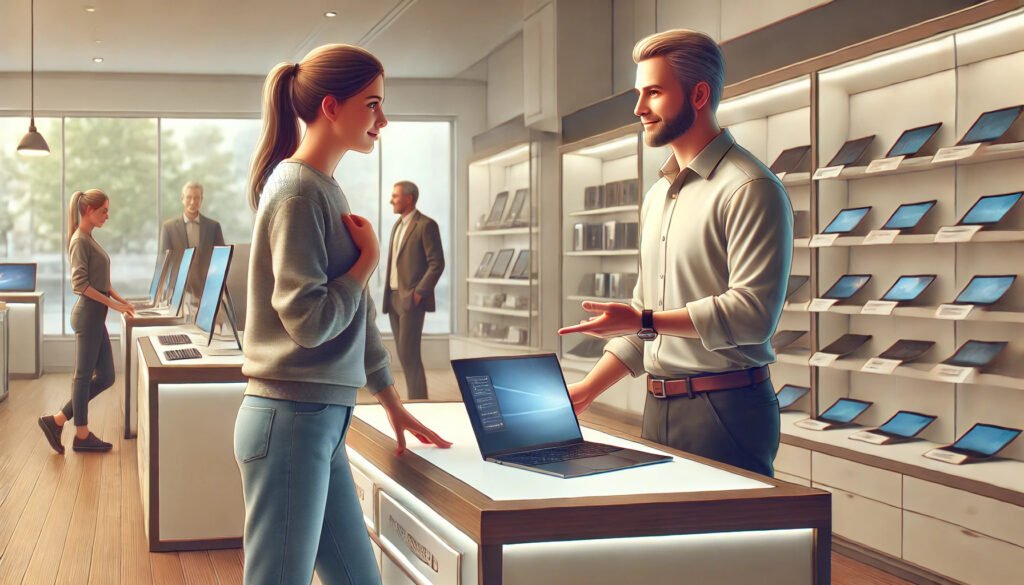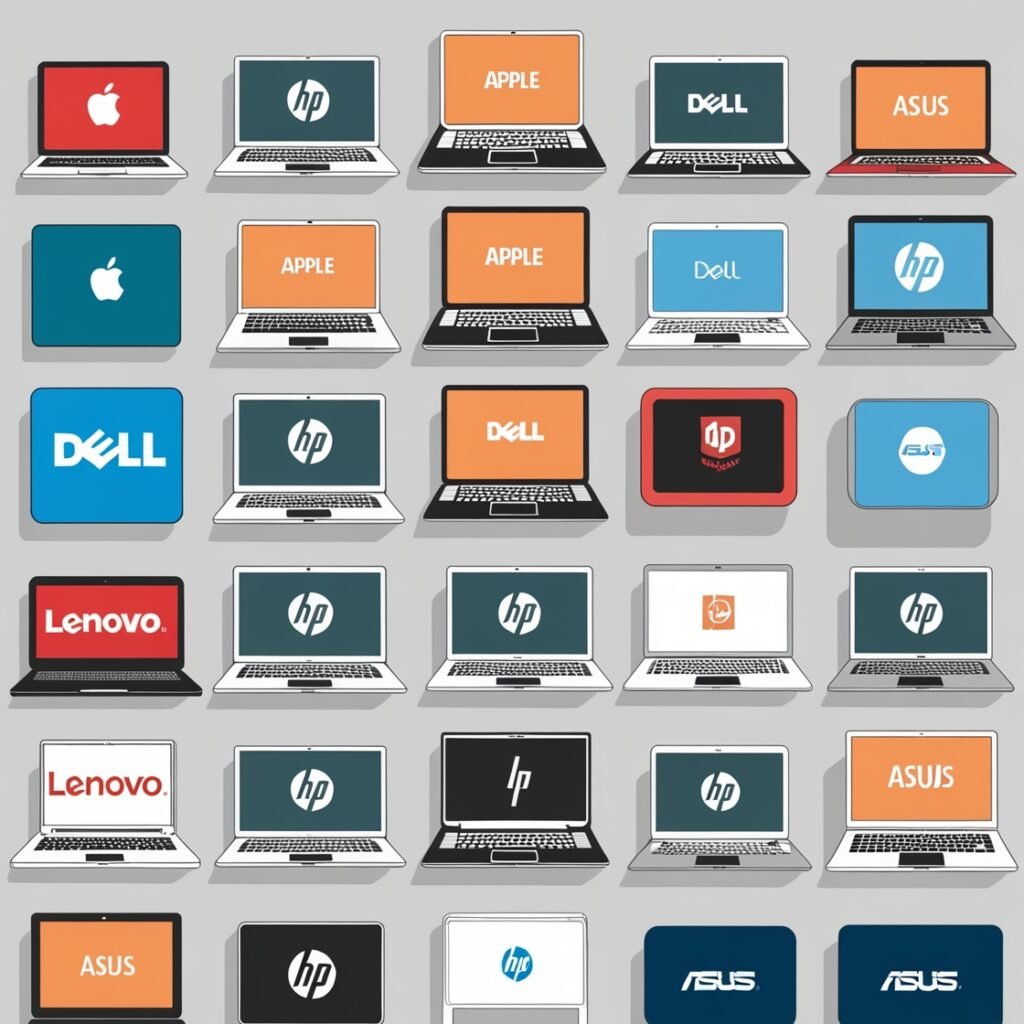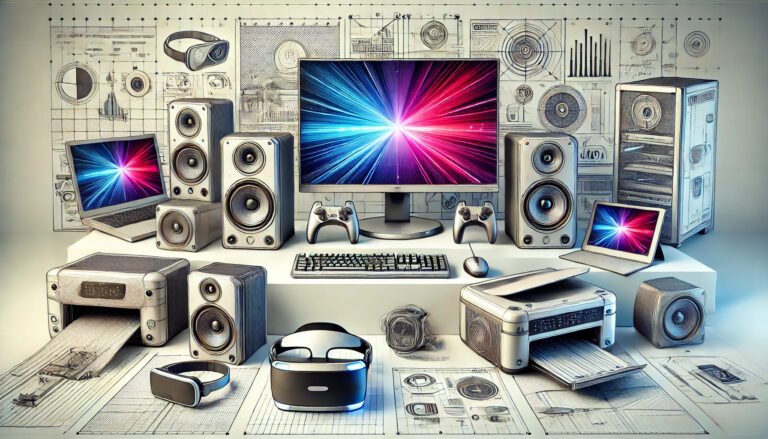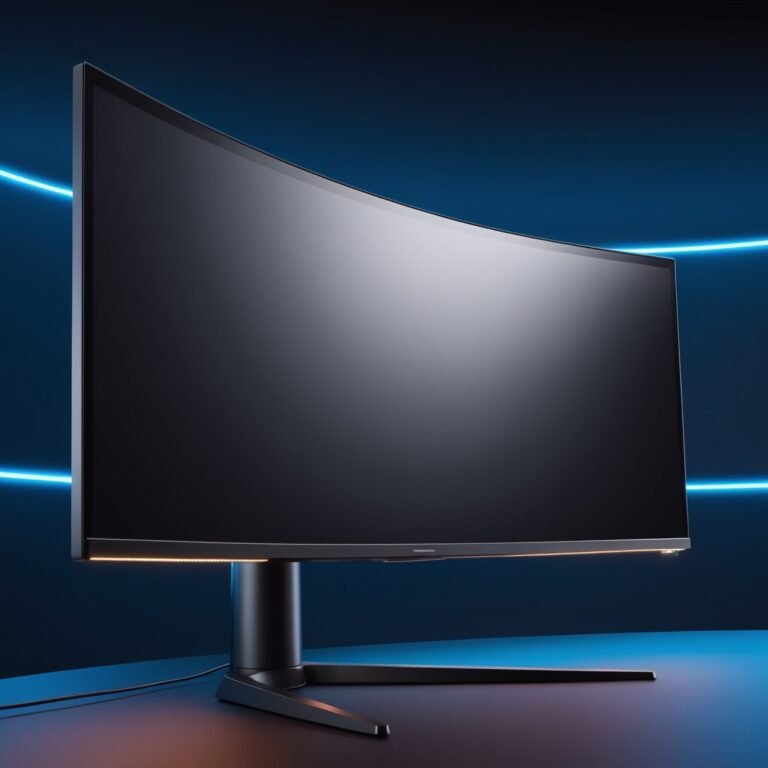When purchasing a laptop, the decision is more than just about aesthetics or brand loyalty, it’s about finding a device that aligns perfectly with your needs. Making an informed choice ensures that your investment fits your budget and serves its purpose effectively, whether for work, study, or leisure.
In this blog, we’ll explore the key factors to consider before buying a laptop, from evaluating its performance to assessing its build quality. Each step is designed to help you navigate the overwhelming options available and make a choice tailored to your unique requirements.

1. Define Your Needs
The foundation of a smart laptop purchase starts with identifying your primary use case. Different needs call for different specifications, so take a moment to think about what you’ll use your laptop for:
- Everyday Tasks: Perfect for simple activities like web browsing, checking emails, and using office applications.
- Students: Ideal for note-taking, conducting research, and handling light multimedia work.
- Business Use: Suitable for tasks like preparing presentations, analyzing data, and video conferencing.
- Creative Work: Designed for more demanding jobs like photo/video editing and graphic design.
- Gaming: Requires high-performance specifications to handle intensive gaming graphics and processing demands.
By clearly defining your needs, you set the stage for selecting a laptop that meets your expectations without overpaying for unnecessary features.
2. Choose the Right Operating System
When choosing a laptop, the operating system (OS) plays a critical role in determining software compatibility and user experience. Each OS caters to specific needs, so understanding their differences is essential.
- Windows: The most widely used operating system, offering extensive software support and versatility. It is suitable for a wide range of users, from casual users to professionals and gamers.
- macOS: Known for its seamless integration within the Apple ecosystem, macOS is ideal for creative professionals and users who own other Apple devices. Its user-friendly interface and optimized performance make it a favorite for multimedia tasks.
- Chrome OS: A lightweight operating system designed for cloud-based tasks and basic usage. It’s perfect for students or anyone who primarily works online, offering fast boot times and excellent security.
- Linux: Preferred by tech enthusiasts and developers, Linux provides unparalleled customization and control. It is a great choice for those who need specific development environments or value open-source flexibility.
3. Evaluate Performance Specifications
Processor (CPU)
The CPU, often referred to as the brain of the computer, is responsible for executing tasks and running programs. Choosing the right CPU depends on the intensity of the tasks you plan to perform:
- For basic tasks like web browsing and word processing, an Intel Core i3 or AMD Ryzen 3 processor is sufficient.
- For more demanding tasks such as gaming or video editing, consider an Intel Core i7/i9 or AMD Ryzen 7/9 for superior performance and multitasking capabilities.
RAM
RAM (Random Access Memory) is crucial for multitasking and running applications smoothly. It determines how many tasks your laptop can handle simultaneously:
- For everyday use, a minimum of 8GB of RAM is recommended.
- For more intensive applications, such as video editing or running virtual machines, aim for 16GB or more to ensure optimal performance.
Storage
Your choice of storage impacts both speed and capacity:
- Solid State Drives (SSDs) are the preferred choice for speed, providing faster boot times and quicker file access compared to traditional Hard Disk Drives (HDDs).
- A minimum of 256GB of SSD storage is recommended for basic users, while those handling larger files or applications should consider 512GB or more.
Graphics Processing Unit (GPU)
The GPU handles visual rendering and is essential for tasks involving graphics:
- Integrated GPUs are built into the CPU and are sufficient for everyday tasks and light multimedia work.
- Dedicated GPUs, such as NVIDIA GeForce or AMD Radeon, are necessary for gaming, 3D modeling, and other graphics-intensive tasks. If your work involves rendering or advanced gaming, invest in a laptop with a dedicated GPU to ensure smooth performance.
4. Battery Life
Portability is a key consideration when choosing a laptop, and battery life plays a significant role in ensuring it can keep up with your daily needs:
- Aim for laptops offering at least 8–10 hours of battery life for general use, ensuring they last throughout the day without constant charging.
- Ultrabooks are known for their exceptional battery performance, making them ideal for professionals on the go. In contrast, gaming laptops often trade battery longevity for high performance, usually offering 4–6 hours at best.
5. Build Quality and Ergonomics
Durability and ergonomic design are essential for a comfortable and long-lasting laptop experience. A well-built laptop not only withstands wear and tear but also enhances usability:
- Materials: Look for laptops made of durable materials like aluminum or carbon fiber, which provide sturdiness while maintaining a lightweight design.
- Keyboard and Touchpad Quality: Test the keyboard for tactile feedback and key travel; a comfortable typing experience is vital for prolonged use. The touchpad should be responsive and accurate, supporting multi-touch gestures smoothly.

6. Connectivity Options
A laptop’s connectivity options determine how well it integrates with peripherals and networks:
- Essential Ports: Ensure the laptop has commonly used ports like USB-A, USB-C, HDMI, and SD card readers for connecting devices such as external drives, monitors, or cameras.
- Wi-Fi Standards: Look for Wi-Fi 6 or Wi-Fi 6E compatibility for faster and more reliable internet connectivity, especially in environments with multiple connected devices.
- Peripheral Compatibility: Verify the laptop supports the accessories and peripherals you plan to use, such as docking stations, external GPUs, or specialized input devices.
7. Form Factor and Size
The form factor and size of a laptop influence both its portability and versatility:
- Form Factors:
- Traditional Clamshell: Offers a standard laptop design and is ideal for users prioritizing simplicity and durability.
- 2-in-1 Convertibles: These combine laptop and tablet functionality, featuring touchscreen capabilities and often a detachable or 360-degree hinge for added versatility.
- Screen Size:
- Laptops range from 13 to 17 inches. Smaller screens (13–14 inches) are lightweight and portable, making them great for students and frequent travelers. Larger screens (15–17 inches) provide more workspace and are suitable for professionals needing extensive screen real estate for multitasking or creative work.
- Balance size with weight and portability to find the best fit for your needs.
8. Price and Budget
Setting a budget before shopping helps narrow your options and focus on laptops that meet your needs without overspending. While premium features may be tempting, prioritize your essential requirements:
- Advanced Features vs. Budget: Features like advanced GPUs, OLED displays, and high-end designs can significantly raise the cost of a laptop. Evaluate whether these are essential for your use case.
- Prioritizing Needs: Clearly define your must-haves (e.g., adequate RAM, SSD storage) and avoid being swayed by non-essential extras.
Conclusion
Choosing the right laptop requires balancing multiple factors, from performance and portability to budget and durability. By thoroughly evaluating your needs and testing potential options, you can make a well-informed decision that enhances both productivity and satisfaction. Remember, the perfect laptop is not just an investment in technology but also in your daily efficiency and enjoyment.
FAQ
1. What are the key specifications I should look for in a laptop?
Focus on the processor (e.g., Intel Core i5/i7 or AMD Ryzen 5/7), RAM (at least 8GB for general use or 16GB for heavy tasks), storage (SSD over HDD for faster performance), and GPU (dedicated graphics for gaming or creative work).
2. How do I check the build quality of a laptop?
Inspect the material (metal is usually sturdier than plastic), hinge durability, keyboard and trackpad responsiveness, and overall feel. If possible, test the laptop in person to see if it meets your expectations.
3. Is it important to check the display before buying a laptop?
Yes, the display is crucial. Look for a resolution of at least 1080p, good brightness (300 nits or higher), color accuracy, and an anti-glare coating if you’ll work in bright environments.
4. How can I assess battery life?
Check the manufacturer’s claim but also read user reviews, as real-world usage may vary. Look for laptops that offer at least 6-8 hours of battery life for standard use.
5. Should I test the laptop’s performance before purchasing it?
If buying in-store, try opening apps, browsing, or watching videos to see how smoothly the laptop performs. For online purchases, rely on professional reviews and benchmarks to gauge its speed and reliability.



